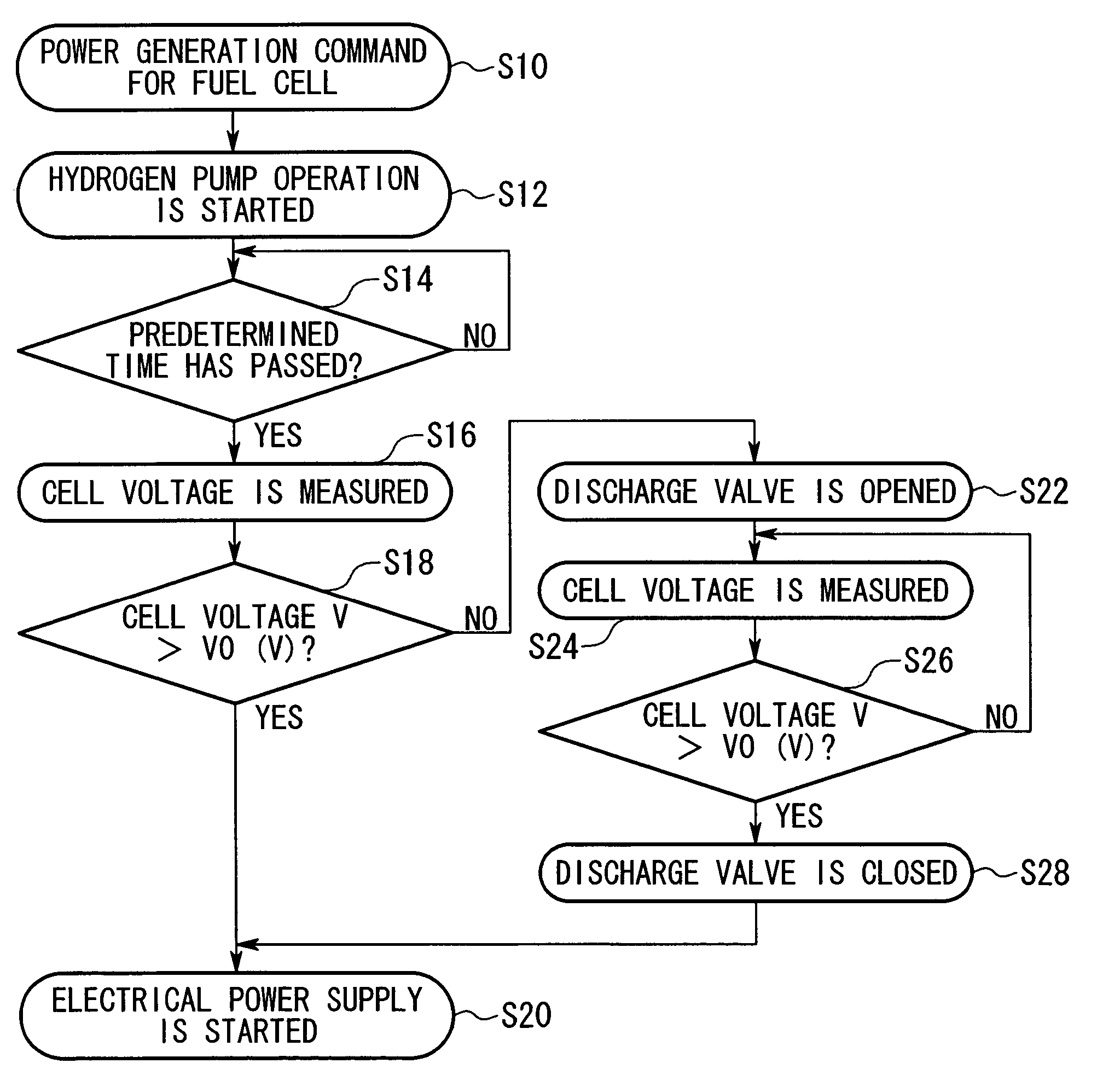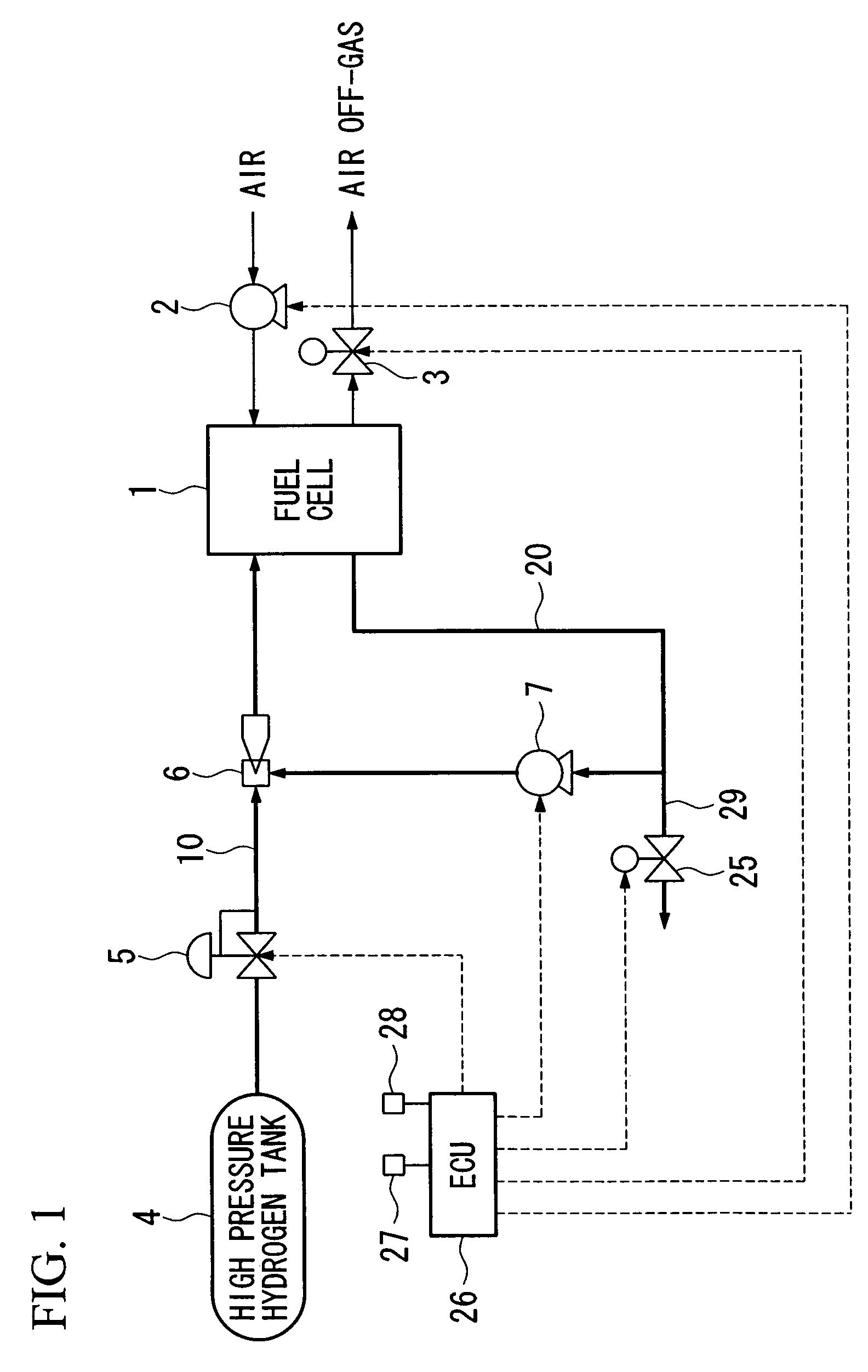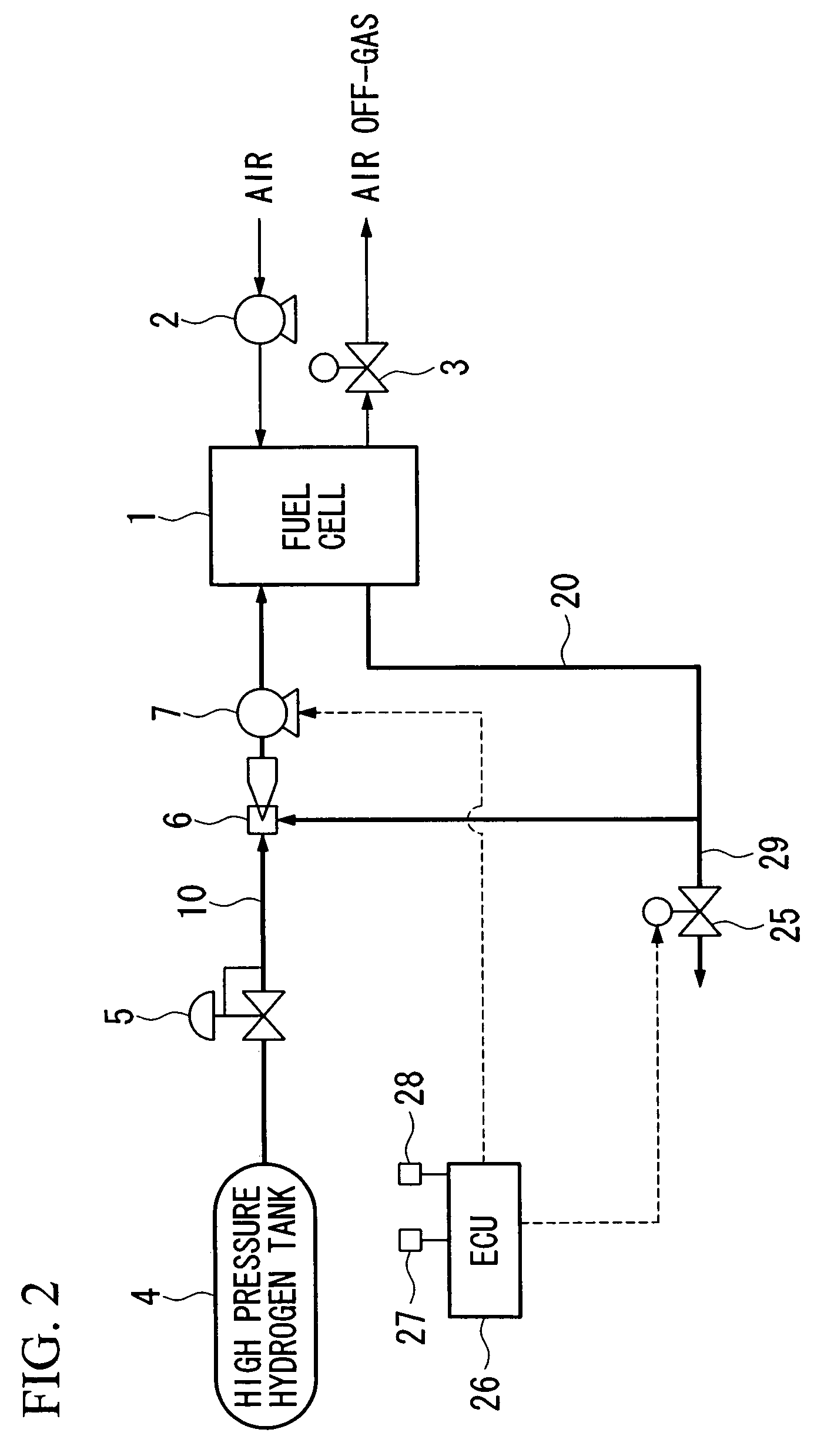Fuel cell system programmed to control reactant gas flow in a gas circulation path
- Summary
- Abstract
- Description
- Claims
- Application Information
AI Technical Summary
Benefits of technology
Problems solved by technology
Method used
Image
Examples
Embodiment Construction
[0030]First, a first embodiment of the fuel cell system according to the present invention will be explained with reference to FIG. 1.
[0031]FIG. 1 is schematic constitution diagram showing the fuel system in the first embodiment.
[0032]A fuel cell 1 is a stack that is formed by stacking a plurality of fuel cell units, each of which includes a solid polymer electrolyte membrane consisting of, for example, a solid polymer ion exchange membrane, and an anode and a cathode that sandwich the solid polymer electrolyte membrane therebetween. When hydrogen as a fuel gas is supplied to the anode, and air containing oxygen as an oxidizing gas is supplied to the cathode, hydrogen ions are produced in the anode area by catalytic reaction, which pass through the solid polymer electrolyte membrane, and which reach the cathode area where the hydrogen ions electrochemically react with oxygen so that electrical power is generated, and water is produced. Because a portion of the water produced in the ...
PUM
 Login to View More
Login to View More Abstract
Description
Claims
Application Information
 Login to View More
Login to View More - R&D
- Intellectual Property
- Life Sciences
- Materials
- Tech Scout
- Unparalleled Data Quality
- Higher Quality Content
- 60% Fewer Hallucinations
Browse by: Latest US Patents, China's latest patents, Technical Efficacy Thesaurus, Application Domain, Technology Topic, Popular Technical Reports.
© 2025 PatSnap. All rights reserved.Legal|Privacy policy|Modern Slavery Act Transparency Statement|Sitemap|About US| Contact US: help@patsnap.com



